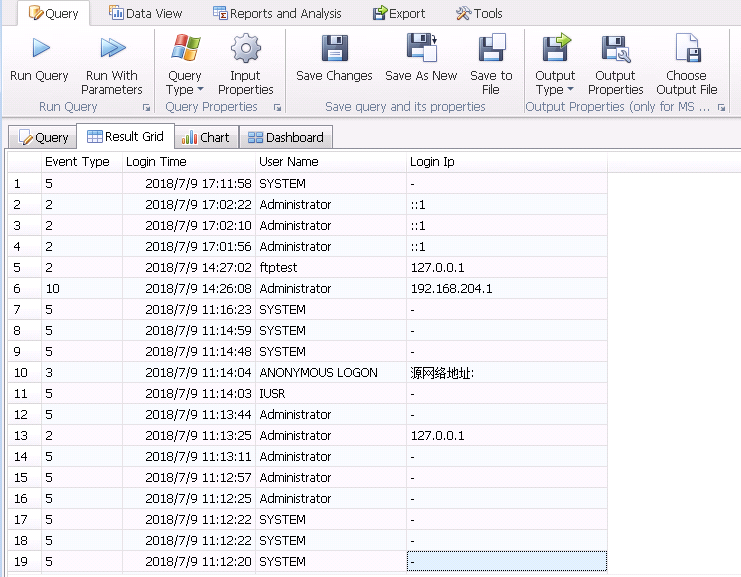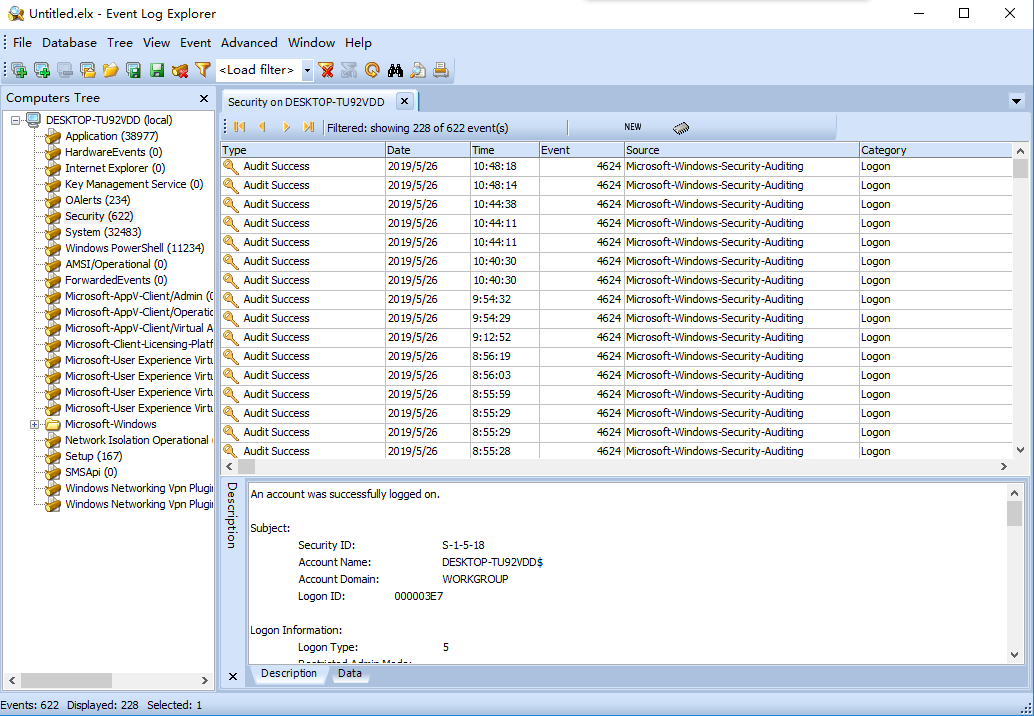安卓手机音乐播放器
付费的:
PowerAMP 最好的,支持多种音频编码,Hi-Fi,AAudio,OpenSL,老旧的AudioTrack
免费的:
AIMP,支持AAudio,OpenSL,老旧的AudioTrack
Musicolet,独有一个musicolet编码,不知道是啥来历
Foobar2000,居然不支持AAudio,只有OpenSL和AudioTrack
付费的:
PowerAMP 最好的,支持多种音频编码,Hi-Fi,AAudio,OpenSL,老旧的AudioTrack
免费的:
AIMP,支持AAudio,OpenSL,老旧的AudioTrack
Musicolet,独有一个musicolet编码,不知道是啥来历
Foobar2000,居然不支持AAudio,只有OpenSL和AudioTrack
Lens Desktop (and its open-source version in OpenLens, which lacks some features like log access) has tools for exploring Kubernetes clusters in a visual environment, with statistics, events, and logs for troubleshooting.
K9s is a terminal-based UI for observing and managing deployed applications on Kubernetes clusters.
Monokle is a suite of tools designed to help everyone from developers to platform engineers manage the application configuration lifecycle in Kubernetes.
有两个神器。
一个是gitlabber,列出Gitlab服务器的所有项目,并以树状结构展示:https://github.com/ezbz/gitlabber
安装:pip install gitlabber
使用:gitlabber -t <personal access token> -u <gitlab url>
另外一个是ghorg,把Gitlab服务器所有的项目克隆到本地:https://github.com/gabrie30/ghorg
安装:scoop install ghorg
配置:需要配置一个conf.yaml文件
使用:ghorg clone 项目 –base-url=http://192.168.1.23 –scm=gitlab –token=自己的token –preserve-dir
Log Parser(是微软公司出品的日志分析工具,它功能强大,使用简单,可以分析基于文本的日志文件、XML 文件、CSV(逗号分隔符)文件,以及操作系统的事件日志、注册表、文件系统、Active Directory。它可以像使用 SQL 语句一样查询分析这些数据,甚至可以把分析结果以各种图表的形式展现出来。
Log Parser 2.2下载地址:https://www.microsoft.com/en-us/download/details.aspx?id=24659
Log Parser 使用示例:https://mlichtenberg.wordpress.com/2011/02/03/log-parser-rocks-more-than-50-examples/

基本查询结构
Logparser.exe –i:EVT –o:DATAGRID "SELECT * FROM c:\xx.evtx"
使用Log Parser分析日志
1、查询登录成功的事件
登录成功的所有事件 LogParser.exe -i:EVT –o:DATAGRID "SELECT * FROM c:\Security.evtx where EventID=4624" 指定登录时间范围的事件: LogParser.exe -i:EVT –o:DATAGRID "SELECT * FROM c:\Security.evtx where TimeGenerated>'2018-06-19 23:32:11' and TimeGenerated<'2018-06-20 23:34:00' and EventID=4624" 提取登录成功的用户名和IP: LogParser.exe -i:EVT –o:DATAGRID "SELECT EXTRACT_TOKEN(Message,13,' ') as EventType,TimeGenerated as LoginTime,EXTRACT_TOKEN(Strings,5,'|') as Username,EXTRACT_TOKEN(Message,38,' ') as Loginip FROM c:\Security.evtx where EventID=4624"
2、查询登录失败的事件
登录失败的所有事件: LogParser.exe -i:EVT –o:DATAGRID "SELECT * FROM c:\Security.evtx where EventID=4625" 提取登录失败用户名进行聚合统计: LogParser.exe -i:EVT "SELECT EXTRACT_TOKEN(Message,13,' ') as EventType,EXTRACT_TOKEN(Message,19,' ') as user,count(EXTRACT_TOKEN(Message,19,' ')) as Times,EXTRACT_TOKEN(Message,39,' ') as Loginip FROM c:\Security.evtx where EventID=4625 GROUP BY Message"
3、系统历史开关机记录:
LogParser.exe -i:EVT –o:DATAGRID "SELECT TimeGenerated,EventID,Message FROM c:\System.evtx where EventID=6005 or EventID=6006"
对于GUI环境的Log Parser Lizard,其特点是比较易于使用,甚至不需要记忆繁琐的命令,只需要做好设置,写好基本的SQL语句,就可以直观的得到结果。
下载地址:http://www.lizard-labs.com/log_parser_lizard.aspx
依赖包:Microsoft .NET Framework 4 .5,下载地址:https://www.microsoft.com/en-us/download/details.aspx?id=42642
查询最近用户登录情况:

Event Log Explorer是一款非常好用的Windows日志分析工具。可用于查看,监视和分析跟事件记录,包括安全,系统,应用程序和其他微软Windows 的记录被记载的事件,其强大的过滤功能可以快速的过滤出有价值的信息。
下载地址:https://event-log-explorer.en.softonic.com/

参考链接:
Windows日志分析 https://mp.weixin.qq.com/s/ige5UO8WTuOOO3yRw-LeqQ
sudo apt install zsh-autosuggestions zsh-syntax-highlighting zsh
sh -c "$(curl -fsSL https://raw.githubusercontent.com/ohmyzsh/ohmyzsh/master/tools/install.sh)"
- autosuggesions plugin
git clone https://github.com/zsh-users/zsh-autosuggestions.git $ZSH_CUSTOM/plugins/zsh-autosuggestions- zsh-syntax-highlighting plugin
git clone https://github.com/zsh-users/zsh-syntax-highlighting.git $ZSH_CUSTOM/plugins/zsh-syntax-highlighting- zsh-fast-syntax-highlighting plugin
git clone https://github.com/zdharma/fast-syntax-highlighting $ZSH_CUSTOM/plugins/zsh-fast-syntax-highlighting- zsh-autocomplete plugin
git clone --depth 1 -- https://github.com/marlonrichert/zsh-autocomplete.git $ZSH_CUSTOM/plugins/zsh-autocomplete
nvim ~/.zshrcplugins=(git).plugins=(git zsh-autosuggestions zsh-syntax-highlighting zsh-fast-syntax-highlighting zsh-autocomplete)" for double quotes' for single quotesOverride more system preferences from the terminal …
# take screenshots as jpg (usually smaller size) and not pngdefaults write com.apple.screencapture type jpg # do not open previous previewed files (e.g. PDFs) when opening a new onedefaults write com.apple.Preview ApplePersistenceIgnoreState YES # show Library folderchflags nohidden ~/Library # show hidden filesdefaults write com.apple.finder AppleShowAllFiles YES # show path bardefaults write com.apple.finder ShowPathbar -bool true # show status bardefaults write com.apple.finder ShowStatusBar -bool true killall Finder;
Install Homebrew as package manager for macOS:
# paste in terminal and follow the instructions/bin/bash -c "$(curl -fsSL https://raw.githubusercontent.com/Homebrew/install/HEAD/install.sh)"
Update everything in Homebrew to recent version:
brew update
Install GUI applications (read more about these in GUI Applications):
brew install --cask \ bitwarden \ google-chrome \ firefox \ brave-browser \ tor \ iterm2 \ visual-studio-code \ sublime-text \ docker \ rectangle \ slack \ discord \ signal \ vlc \ calibre \ figma \ maccy
Install terminal applications (read more about these in Terminal Applications):
brew install \ wget \ exa \ git \ nvm \ pnpm \ graphicsmagick \ commitzen \ cmatrix \ vips
exaexa -a (include hidden files)exa -l (include additional information)The look and feel we want to achieve from our terminal:

When you open iTerm2, you see that MacOS already comes with zsh as default shell. Install Oh My Zsh for an improved (plugins, themes, …) terminal (here: iTerm2) experience:
sh -c "$(curl -fsSL https://raw.githubusercontent.com/ohmyzsh/ohmyzsh/master/tools/install.sh)"
Update everything (e.g. plugins) in Oh My Zsh to recent version:
omz update
Important: If you change something in your Zsh configuration (.zshrc), force a reload:
source ~/.zshrc
Oh My Zsh Theme + Fonts:
Install Starship as your new terminal theme. We will use Homebrew, but you can use an alternative from the website too:
brew install starship
Make it the default theme for Oh My ZSH from the terminal:
echo 'eval "$(starship init zsh)"' >> ~/.zshrc
As font we will be using Hack Nerd Font in iTerm2, VS Code, and Sublime Text. Install it via:
brew tap homebrew/cask-fontsbrew install --cask font-hack-nerd-font
Use the new font in iTerm2: Preferences -> Profile -> Text -> Font: font-hack-nerd-font.
If the theme and font changes do not apply, reload your zsh configuration (.zshrc) or close/open iTerm2.
Oh My Zsh Plugins
ZSH Configuration File (.zshrc):
# Path to your oh-my-zsh installation.export ZSH="$HOME/.oh-my-zsh" # Which plugins would you like to load?# Standard plugins can be found in $ZSH/plugins/# Custom plugins may be added to $ZSH_CUSTOM/plugins/# Example format: plugins=(rails git textmate ruby lighthouse)# Add wisely, as too many plugins slow down shell startup.plugins=( git zsh-completions zsh-autosuggestions zsh-syntax-highlighting) # get machine's ip addressalias ip="ipconfig getifaddr en0" # edit global zsh configurationalias zshconfig="vim ~/.zshrc"# reload zsh configurationalias zshsource="source ~/.zshrc"# reload zsh configurationalias ohmyzsh="cd ~/.oh-my-zsh" # navigate to global ssh directoryalias sshhome="cd ~/.ssh"# edit global ssh configurationalias sshconfig="vim ~/.ssh/config" # edit global git configurationalias gitconfig="vim ~/.gitconfig" # git aliasesalias gits="git status"alias gitd="git diff"alias gitl="git lg"alias gita="git add ."alias gitc="cz commit" # type sublime . to open current folder in Sublime Textalias sublime="/Applications/Sublime\ Text.app/Contents/SharedSupport/bin/subl --new-window $@" # load zsh-completionsautoload -U compinit && compinit # use nvmsource /opt/homebrew/opt/nvm/nvm.sh # use starship theme (needs to be at the end)eval "$(starship init zsh)"
The look and feel we want to achieve from our IDE:

Extensions:
Manual:
JSON Settings:
{ "breadcrumbs.enabled": false, "files.trimTrailingWhitespace": true, "explorer.confirmDelete": false, "workbench.colorTheme": "Night Owl", "workbench.sideBar.location": "right", "workbench.startupEditor": "none", "workbench.statusBar.visible": true, "workbench.activityBar.visible": false, "workbench.editor.restoreViewState": true, "terminal.integrated.fontFamily": "Hack Nerd Font Mono", "editor.fontFamily": "Hack Nerd Font Mono", "editor.fontSize": 14, "editor.tabSize": 2, "editor.insertSpaces": true, "editor.detectIndentation": false, "editor.renderWhitespace": "none", "editor.scrollBeyondLastLine": true, "editor.minimap.enabled": false, "editor.find.seedSearchStringFromSelection": "never", // syntax highlighting "files.associations": { ".env*": "makefile" }, // prettier "prettier.singleQuote": true, "prettier.printWidth": 70, "editor.formatOnSave": false, "[javascript]": { "editor.formatOnSave": true, "editor.defaultFormatter": "esbenp.prettier-vscode" }, "[javascriptreact]": { "editor.formatOnSave": true, "editor.defaultFormatter": "esbenp.prettier-vscode" }, "[typescript]": { "editor.formatOnSave": true, "editor.defaultFormatter": "esbenp.prettier-vscode" }, "[typescriptreact]": { "editor.formatOnSave": true, "editor.defaultFormatter": "esbenp.prettier-vscode" }, // eslint "editor.codeActionsOnSave": { "source.fixAll.eslint": true }, "eslint.validate": ["javascript"], "javascript.updateImportsOnFileMove.enabled": "never", "typescript.updateImportsOnFileMove.enabled": "never", // auto generated "explorer.confirmDragAndDrop": false, "js/ts.implicitProjectConfig.checkJs": true}
Not used for web development anymore. Primarily used for writing this blog.
General:
Extensions:
JSON Settings:
{ "caret_style": "solid", "folder_exclude_patterns": [ ".git", "node_modules" ], "font_size": 14, "font_face": "Hack Nerd Font", "gutter": true, "highlight_line": true, "highlight_modified_tabs": true, "ignored_packages": [ "TypeScript", "Vintage" ], "line_padding_bottom": 1, "line_padding_top": 1, "predawn_findreplace_small": true, "predawn_sidebar_arrows": true, "predawn_sidebar_narrow": true, "predawn_sidebar_xsmall": true, "predawn_tabs_small": true, "rulers": [ 120 ], "scroll_past_end": true, "show_line_numbers": true, "spell_check": false, "tab_size": 2, "theme": "Agila Origin.sublime-theme", "theme_agila_compact_sidebar": true, "theme_agila_compact_tab": true, "theme_agila_horizontal_scrollbar_thinnest": true, "theme_agila_sidebar_font_xsmall": true, "theme_agila_sidebar_mini": true, "theme_agila_vertical_scrollbar_thinnest": true, "translate_tabs_to_spaces": true, "trim_trailing_white_space_on_save": true, "color_scheme": "Packages/Agila Theme/Agila Origin Oceanic Next.tmTheme",}
From terminal, set global name and email:
git config --global user.name "Your Name"git config --global email "you@your-domain.com"
Improved git log:
git config --global alias.lg "log --color --graph --pretty=format:'%Cred%h%Creset -%C(yellow)%d%Creset %s %Cgreen(%cr) %C(bold blue)<%an>%Creset' --abbrev-commit"
Now use:
git lg
Set the default branch to main instead of master:
git config --global init.defaultBranch main
Print global git configuration:
git config --list# or alias# gitconfig
There are two common strategies for SSH keys: one SSH key to rule them all or one SSH key per service. I use the latter one and will here run yout through it by connecting to GitHub via SSH.
First, create a new SSH key in the ~/.ssh folder:
# in case the folder is not there yetmkdir ~/.ssh cd ~/.ssh# or alias# sshhome ssh-keygen -t ed25519 -C "github"# follow instructions# use file name: github# use passphrase and store it somewhere secure
Confirm whether passphrase was used properly by accessing private key:
ssh-keygen -y -f gitHub# confirm with passphrase
Create the SSH configuration file if it doesn’t exist yet:
# in case the file is not there yettouch ~/.ssh/config
In your ~/.ssh/config file, add the new SSH key, so that it can get picked up for every terminal session automatically:
Host * AddKeysToAgent yes UseKeychain yes IdentityFile ~/.ssh/github
Add SSH key to MacOS’ keychain:
ssh-add --apple-use-keychain ~/.ssh/github
Add the public key to your GitHub settings via the website or via the GitHub CLI (via brew install gh):
# copy public key and add it to https://github.com/cat ~/.ssh/id_rsa.pub | pbcopy # or use GitHub's CLIgh auth login# for the first login I think the SSH key gets added# without the next command, but if not: gh ssh-key add ~/.ssh/id_rsa.pub -t github
That’s it. You have created an SSH key locally for one specific service, secured it via a passphrase, made it automatically available for every terminal session, and applied it to GitHub. In the case of GitHub, you are now able to interact with GitHub via SSH.
The node version manager (NVM) is used to install and manage multiple Node versions. After you have installed it via Homebrew in a previous step, type the following commands to complete the installation:
echo "source $(brew --prefix nvm)/nvm.sh" >> ~/.zshrc source ~/.zshrc# or alias# zshsource
Now install the latest LTS version on the command line:
nvm install <latest LTS version from https://nodejs.org/en/>
Afterward, check whether the installation was successful and whether the node package manager (npm) got installed along the way:
node -v && npm -v
Update npm to its latest version:
npm install -g npm@latest
And set defaults for npm:
npm set init.author.name "your name"npm set init.author.email "you@example.com"npm set init.author.url "example.com"
If you are a library author, log in to npm too:
npm adduser
That’s it. If you want to list all your Node.js installation, type the following:
nvm list
If you want to install a newer Node.js version, then type:
nvm install <version> --reinstall-packages-from=$(nvm current)nvm use <version>nvm alias default <version>
Optionally install yarn if you use it as alternative to npm:
npm install -g yarnyarn -v
If you want to list all globally installed packages, run this command:
npm list -g --depth=0
That’s it. You have a running version of Node.js and its package manager.
I hope my setup helps other developers to get their Mac up and running. If you have any additional ideas or want to share your setup, let me know!
CP: https://www.robinwieruch.de/mac-setup-web-development/
| Search Engine | Best Known For |
|---|---|
| The Pirate Bay | Big Boss of Torrents |
| RARBG | Most Diverse Torrent Repository |
| Snowfl | Very fast; Easy to use; Custom filtering included. |
| Torrents.Me | Parallel Search in 600+ Torrent Websites |
| XTORX | Very simple UI; Fast and accurate; No advertisements. |
| Toorgle | Torrent Search in over 450+ torrents websites at the same time. |
| AIO Search | Google of Torrent Stuff |
| Zooqle | Movies Search only |
| Veoble | Powered by Google custom search; Tons of filtering options; All popular sources covered. |
| Academic Researchers | Only for Researchers |
| TorrentSeeker | Minimal UI, Customized search results; Wide range. |
| 1337x | One of the largest engine for movies, games, TV series and more |
| ExtraTorrent | Largest Torrent Community |
| YTS.AG | Movies Exclusive |
| BTDB | Simple and effective; Clean design; Fast search. |
| TorrentHounds | Most resilient Torrent Community |
| Lime Torrents | Redesigned and Improved Features |